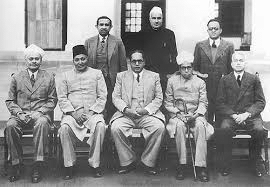LAQ for Chapter 10 The Constitution of India — An Introduction Class 7 Social Science NCERT
Important Questions1
Q1: What was the role of Dr. B.R. Ambedkar in the drafting of the Indian Constitution?
Answer
• Dr. B.R. Ambedkar played a pivotal role as the Chairman of the Drafting Committee of the Indian Constitution.• He ensured that the Constitution upheld the values of equality, justice, and social rights, particularly for marginalized groups.
• His leadership and vision shaped key sections of the Constitution, particularly those related to fundamental rights, social justice, and the protection of individual liberties.

Dr. B.R. Ambedkar
LAQ
2
Q2: How did the freedom struggle influence the inclusion of Fundamental Rights in the Constitution?
Answer
• The freedom struggle was focused on the protection of citizens' rights against colonial oppression.• Leaders from the movement, including Mahatma Gandhi, Jawaharlal Nehru, and others, ensured that the Constitution included Fundamental Rights to protect individual freedoms.
• These rights guarantee equality, freedom of speech, and protection from exploitation, ensuring the spirit of democracy and justice.
LAQ
3
Q3: Why was it necessary to include the concept of "Separation of Powers" in the Constitution?
Answer
• The separation of powers ensures that no one branch of government becomes too powerful.• By dividing authority among the legislature, executive, and judiciary, the Constitution maintains a system of checks and balances.
• This system allows each branch to act independently, preventing misuse of power and safeguarding democratic principles.
LAQ
4
Q4: Explain the significance of the Preamble and how it reflects the values of the Constitution.
Answer
• The Preamble serves as the introduction to the Constitution, outlining its core values and objectives.• It reflects the ideals of justice, liberty, equality, and fraternity.
• The Preamble emphasizes India’s commitment to a sovereign, secular, democratic republic, guiding the government in ensuring fairness and respect for all citizens, regardless of their background.
LAQ
5
Q5: What role did the Constituent Assembly play in shaping the Indian Constitution?
Answer
• The Constituent Assembly was tasked with framing the Constitution of India after independence.• It consisted of elected representatives who debated key issues such as governance, fundamental rights, and the structure of the government.
• The assembly's decisions shaped India’s democratic framework and ensured the inclusion of values like equality, justice, and social welfare.
LAQ
6
Q6: How does the Indian Constitution ensure the protection of minority rights?
Answer
• The Indian Constitution guarantees the protection of minority rights through provisions like the Right to Equality and the Right to Freedom of Religion.• It ensures that no individual or community is discriminated against based on religion, caste, or language.
• Additionally, the Constitution encourages the protection of minority languages and cultures, promoting an inclusive society.
LAQ
7
Q7: What is the significance of the Directive Principles of State Policy (DPSP) in the Indian Constitution?
Answer
• The DPSP provides guidelines to the government for achieving social and economic justice.• While they are not legally enforceable, they guide government policies on issues like healthcare, education, and the environment.
• The DPSPs reflect the Constitution’s commitment to improving the quality of life for all citizens, particularly the disadvantaged.
LAQ
8
Q8: How does the Constitution accommodate India's diversity in terms of religion, language, and culture?
Answer
• The Indian Constitution accommodates India’s diversity by recognizing multiple languages, religions, and cultures.• It guarantees the freedom to practice any religion and promotes the idea of "unity in diversity."
• The Constitution allows for the protection of cultural heritage and the promotion of multiple languages through the recognition of various regional languages in the Eighth Schedule.
LAQ